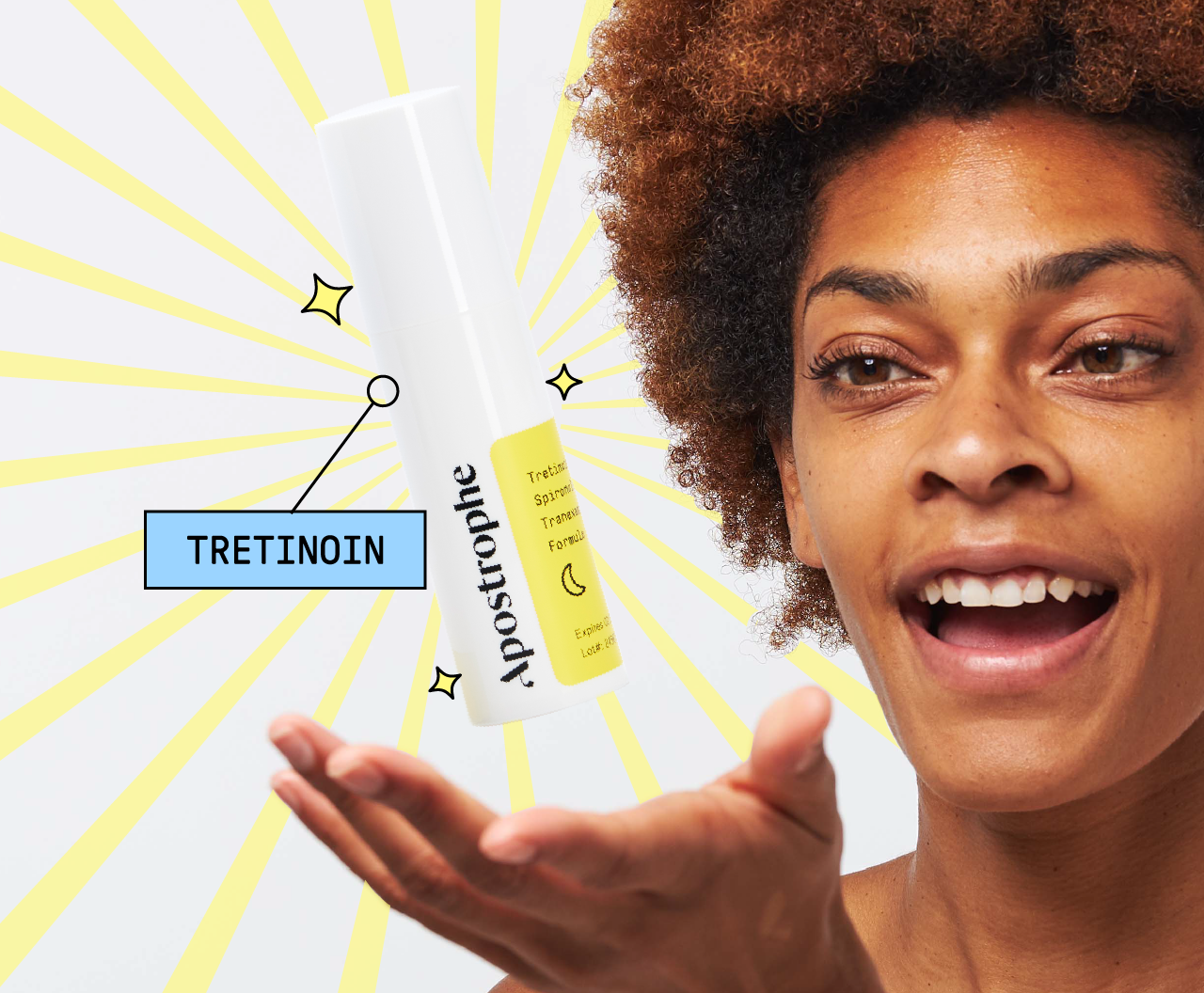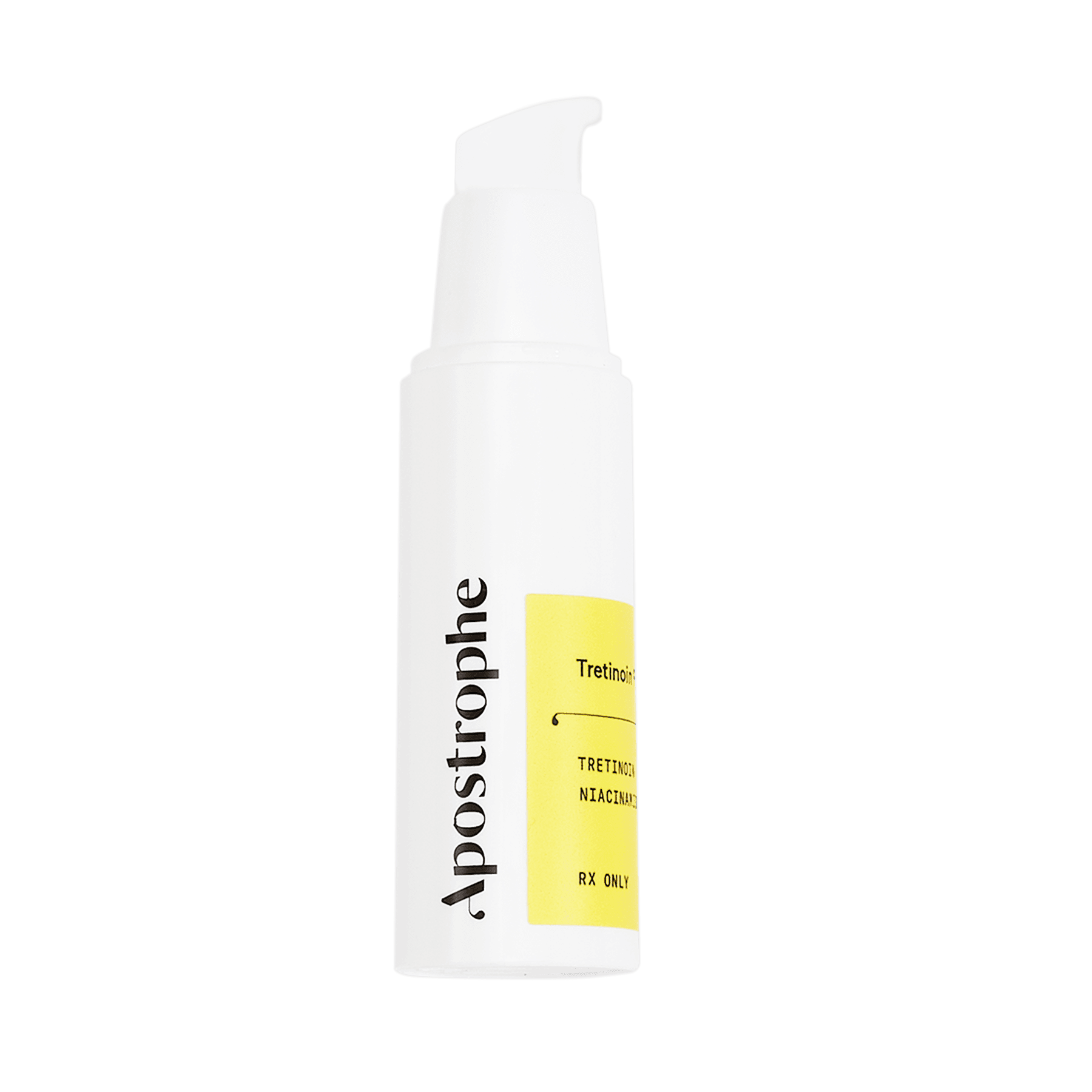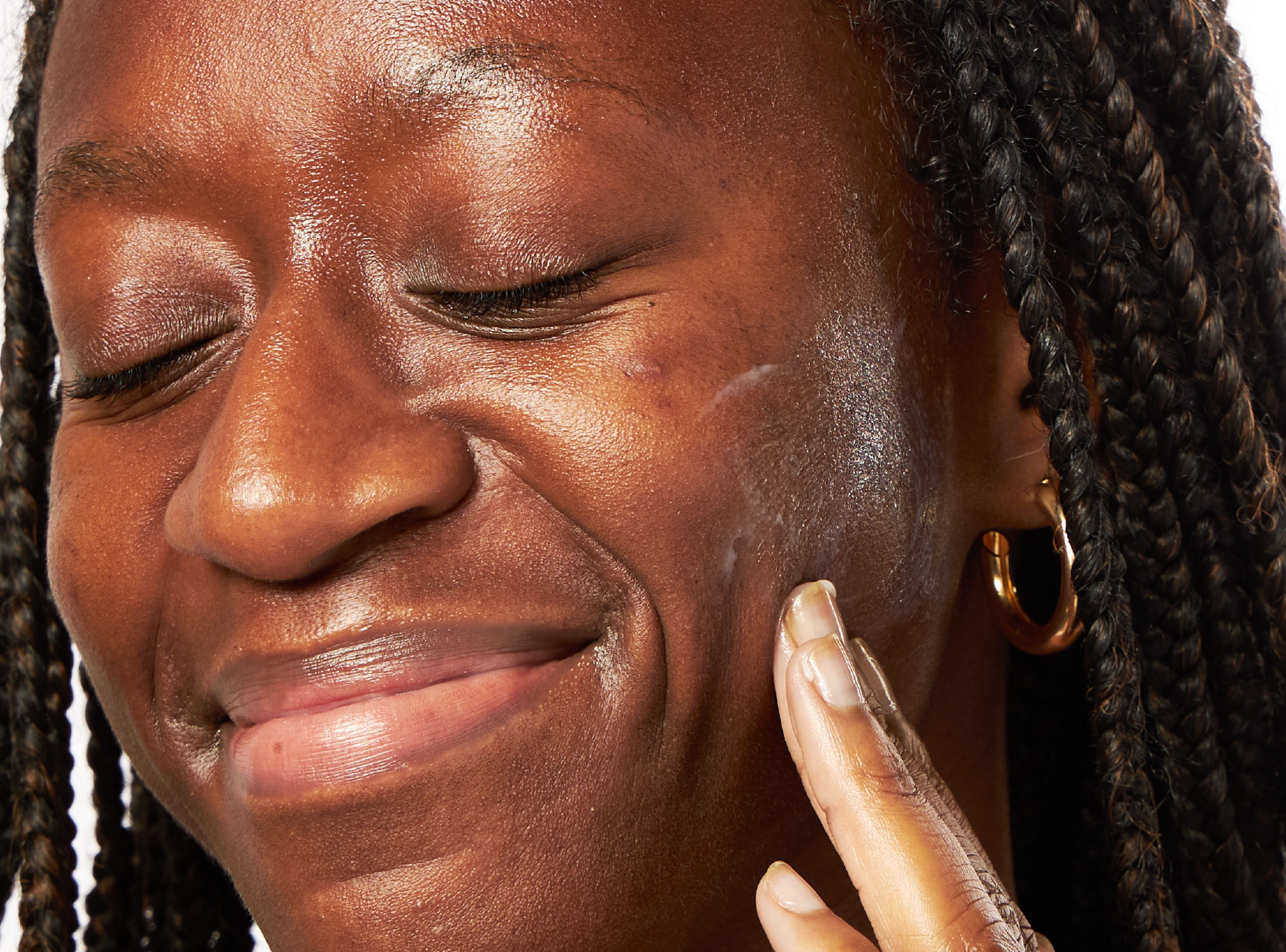Education
Exfoliating With Tretinoin: The Dos and Don'ts


SHARE
Education
Exfoliating With Tretinoin: The Dos and Don'ts
Medically reviewed by Aimee Paik, MD
Written by Apostrophe Team
Last updated 4/5/2024
Tretinoin is one of the most effective skincare medications on the market, used by millions of people to treat and prevent acne, reduce the appearance of wrinkles and maintain healthier, better-looking skin.
One of the most common questions related to tretinoin is whether or not it’s okay to exfoliate while you’re using a topical tretinoin cream, gel or solution.
Tretinoin is a reasonably powerful exfoliant that produces its own exfoliating effects, meaning there’s usually no need to use any extra exfoliating products.
However, in some cases, it’s still okay to exfoliate your facial skin while using tretinoin. Below, we’ve explained how tretinoin works as an exfoliant, as well as what you can do to keep your skin fresh, moisturized and dryness-free while you’re using tretinoin for acne or anti-aging application.
Tretinoin is Already a Powerful Exfoliant
Tretinoin works by increasing skin cell turnover, meaning your body produces new skin cells at a faster rate than it normally would. These skin cells move to the surface layer of your epidermis—the outermost part of your skin—replacing old skin cells in the process.
You can think of tretinoin as a type of fast-forward button for your skin cell turnover process. Many people use tretinoin for wrinkles, because when we get older, skin cell turnover tends to slow down, meaning the cells on the outer layer of your skin take longer to be replaced than normal.
This increases your risk of developing acne due to clogged hair follicles, but also—and perhaps more importantly—makes signs of aging such as wrinkles and skin discoloration more obvious.
By speeding up the skin cell turnover process, tretinoin acts as a fairly powerful exfoliant. When you use topical tretinoin, your body replaces its old skin cells at a faster speed, exfoliating away the old cells in the process.
This is one of the biggest reasons tretinoin side effects are sometimes intense during the first few weeks of treatment.
As skin cell turnover speeds up, old skin can dry out, peel off and flake away, exposing the newer, fresh layer of skin in the process.
It’s important to keep this in mind when considering the use of other exfoliating products. While skincare commercials might claim that using an exfoliator is “essential,” remember that tretinoin acts as a powerful and effective exfoliant on its own.
Whether you're using tretinoin for wrinkles, acne or other skin issues, it's crucial to keep in mind that it's generally a one-stop-shop kind of product.
Let Your Body Adjust Before Considering Other Products
Tretinoin is well known for its adjustment period—a two- to six-week phase that many tretinoin users refer to as a “purge.”
As mentioned above, tretinoin side effects can be a little intense at first. it’s common to experience some level of dryness, flaking and skin irritation. Most people only experience mild symptoms (and, truthfully, many people notice no negative effects at all), while others can experience significant dryness and peeling.
It’s also far from uncommon for your acne to get worse during the first few weeks of tretinoin usage, as acne is “purged” from the face due to the increased speed of skin cell turnover.
During the adjustment period, it’s best to avoid using any exfoliants or other skincare products that could irritate your skin.
Instead, give your body two to six weeks to adjust to the effects of the tretinoin cream or gel before adding additional products into your skincare routine—and only add them if you must.
The one exception to this rule is moisturizer, which you can use alongside tretinoin to manage the dryness, flaking and peeling that can occur during the initial adjustment period.
After the adjustment effects have passed, you can start to think about adding exfoliants, lotions and other products to your skincare routine. For the first few weeks, hold tight and focus on the tretinoin alone. After a month or two, you will notice an improvement.
Use Exfoliants Sparingly After the Adjustment Period
After two to six weeks of using tretinoin, it’s usually okay to start using an exfoliant. However, it’s best to use exfoliating products as sparingly as possible while using tretinoin to avoid potentially irritating your skin.
If you do choose to use an exfoliant with tretinoin, avoid using it too frequently. A good strategy is to begin by exfoliating once per week, then increase to twice per week at most if your skin is smooth, healthy and irritation-free after a few weeks of tretinoin usage.
Finally, make sure you avoid over-exfoliating. If your skin is excessively dry, irritated or flaky, it’s best to stop exfoliating and talk to your healthcare provider about switching to a tretinoin cream with a lower concentration.
If Your Skin is Overly Dry, Use a Moisturizer
On its own, tretinoin can make your skin significantly dryer, especially during the first few weeks or months of treatment.
Add an exfoliator into the picture and it’s easy for your skin to become overly dry, causing everything from irritation to peeling.
If your skin is overly dry, you can use a moisturizer alongside tretinoin to manage dryness and prevent your skin from peeling.
Our guide to the best way to apply your tretinoin explains how you can apply moisturizer without affecting the absorption rate of tretinoin cream.
In general, most people won’t need to use an exfoliant with tretinoin. Instead, the best approach is to let tretinoin work on its own to speed up skin cell turnover and improve your skin, all while managing potential dryness, flaking and irritation through good hydration and moisturizing.
Learn More About Using Tretinoin
From acne to aging, tretinoin is scientifically proven to improve the appearance of your skin. Our guides to using tretinoin for treating acne and preventing the signs of aging explain how you can use tretinoin to improve your skin and enhance your appearance.
You can also learn more about tretinoin’s benefits, brand names, potential side effects and more in our Tretinoin 101 guide.
This article is for informational purposes only and does not constitute medical advice. The information contained herein is not a substitute for and should never be relied upon for professional medical advice. Always talk to your doctor about the risks and benefits of any treatment.
Shop this post

Tretinoin
Like what you just read? Sign up for our email list to get the scoop on skincare science delivered straight to your inbox.

Deep Dives
A dermatologist shares his thoughts on the recent studies about benzoyl peroxide and benzene.
Read More
Education
What is milia?
What is milia? Today, we’re jumping into one type of bump that you may have heard about most commonly in infants — milia.
Read More
Education
Best moisturizer for acne-prone skin
If you have combination acne-prone skin, figuring out which moisturizer is best for your skin might be tough. In this guide, we break down the best moisturizer for combination, acne-prone skin.
Read More
